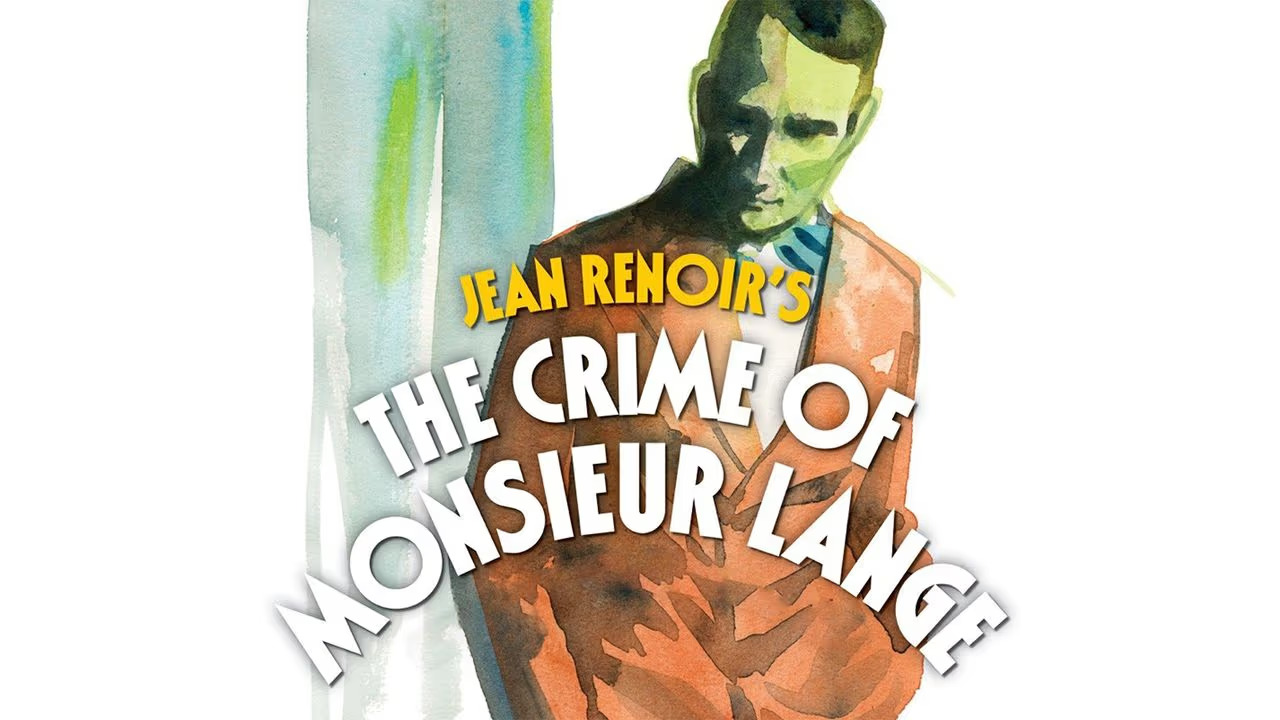
The Crime of Monsieur Lange is a captivating and critically acclaimed film that holds a special place in the history of cinema. Directed by the legendary Jean Renoir, this French classic was released in 1936 and tells the story of a group of workers who seize control of their publishing house after the mysterious disappearance of their tyrannical boss. The film is a compelling blend of drama, comedy, and social commentary, exploring themes of love, greed, and the power of collective action. With its unique storytelling, memorable characters, and thought-provoking narrative, The Crime of Monsieur Lange continues to captivate audiences and serves as a testament to the brilliance of Renoir’s filmmaking. In this article, we delve into 35 fascinating facts about this iconic movie, uncovering the behind-the-scenes details that have contributed to its lasting legacy.
Key Takeaways:
- The Crime of Monsieur Lange is a classic French film with a mix of crime and comedy, exploring timeless themes like love and justice. Its unique storytelling and memorable characters make it a must-watch for movie enthusiasts.
- This influential film from 1936 has left a lasting impact on French cinema, inspiring future filmmakers and captivating audiences with its blend of farce and tragedy. Its enduring relevance and powerful message make it a valuable source of analysis and discussion in film schools worldwide.
The Crime of Monsieur Lange is a French film released in 1936.
One of the oldest films on this list, The Crime of Monsieur Lange holds historical significance in the realm of French cinema.
The film was directed by renowned French filmmaker Jean Renoir.
As one of the greatest filmmakers of all time, Renoir expertly crafted this film with his unique vision and storytelling ability.
The screenplay for the movie was written by Jacques Prévert.
Prévert’s writing captures the essence of the story and adds depth to the characters.
The Crime of Monsieur Lange is often classified as a crime drama with elements of comedy.
The blend of genres adds an interesting twist to the storyline and keeps the audience engaged.
The film explores the themes of love, betrayal, and justice.
These universal themes resonate with audiences of all generations, making the movie timeless.
The Crime of Monsieur Lange features a stellar cast, including René Lefèvre, Florelle, and Jules Berry.
The performances by the actors breathe life into their characters and make the story captivating.
The movie takes place in a publishing house called “Dreux & Brichot”.
This setting serves as a backdrop for the unfolding events and adds depth to the narrative.
The Crime of Monsieur Lange was filmed in black and white.
This artistic choice adds a sense of nostalgia and enhances the overall aesthetic of the film.
The film’s runtime is approximately 80 minutes.
The concise length ensures that the story progresses at a steady pace without unnecessary filler.
The Crime of Monsieur Lange was well-received by critics upon its release.
Its thought-provoking storyline and compelling performances garnered praise from many reviewers.
The movie was banned by the government during World War II.
Its satirical and critical portrayal of society led to its censorship during a sensitive period.
The Crime of Monsieur Lange was restored and re-released in 1984.
Its re-release allowed a new generation of viewers to appreciate the film’s artistic merit.
The film features a nonlinear narrative structure.
This storytelling technique adds intrigue and keeps the audience guessing throughout the movie.
The Crime of Monsieur Lange received several award nominations.
It was recognized for its outstanding screenplay, direction, and performances.
The movie has a memorable soundtrack composed by Joseph Kosma.
The music adds emotional depth and enhances the impact of certain scenes.
The Crime of Monsieur Lange tackles social issues of the time.
It shines a light on topics such as workers’ rights and the influence of media.
Jean Renoir’s father, Auguste Renoir, has a small role in the film.
This cameo adds a personal touch to the movie and showcases the family’s talent.
The film explores the power dynamics within a small community.
It delves into the complexities of relationships and the way people wield influence.
The Crime of Monsieur Lange is considered a precursor to the French New Wave movement.
Its innovative storytelling techniques greatly influenced future filmmakers.
The movie’s title refers to an act committed by one of the characters.
This crime serves as a turning point in the narrative and drives the story forward.
The film’s dialogue is known for its wit and sharpness.
The quick exchanges between characters add a layer of humor to the overall tone.
The Crime of Monsieur Lange features a strong female character named Valentine.
Valentine’s presence challenges traditional gender roles and enriches the movie’s themes.
The film’s production design recreates the atmosphere of 1930s Paris.
The attention to detail immerses the viewers in the time period and adds authenticity to the story.
The Crime of Monsieur Lange is considered a classic of French cinema.
Its enduring popularity speaks to its impact on the industry and its continued relevance.
The movie combines elements of farce and tragedy.
This juxtaposition creates a unique viewing experience and evokes a range of emotions.
The Crime of Monsieur Lange was influential in the development of film noir.
Its exploration of morally ambiguous characters and dark themes set the stage for future noir films.
The film’s narrative unfolds through a series of flashbacks.
This narrative technique adds depth to the characters’ backstories and provides context for their actions.
The Crime of Monsieur Lange addresses the struggles of the working class.
It highlights the clash between the lower and upper classes and the injustices faced by the former.
The movie showcases the power of storytelling and its ability to inspire change.
The characters use literature as a means of liberation and resistance.
The Crime of Monsieur Lange has been studied in film schools around the world.
Its artistic merits and thematic significance make it a valuable source of analysis and discussion.
The film’s ending leaves room for interpretation and reflection.
It encourages viewers to contemplate the consequences of the characters’ actions and the broader sociopolitical implications.
The Crime of Monsieur Lange is a testament to the power of independent filmmaking.
Despite its limitations, the film manages to convey a powerful message and captivate audiences.
The movie’s satirical elements provide a critique of societal norms and values.
It challenges the status quo and prompts viewers to question their own beliefs.
The Crime of Monsieur Lange highlights the resilience of the human spirit.
Despite facing adversity, the characters find strength in unity and solidarity.
The film’s legacy continues to inspire filmmakers and cinephiles today.
Its impact on French cinema and its enduring relevance make it a must-watch for movie enthusiasts.
Conclusion
In conclusion, “The Crime of Monsieur Lange” is a captivating French film that explores themes of love, deception, and justice. With its compelling storytelling, brilliant performances, and timeless messages, this movie has cemented its place as a classic in the world of cinema. Whether you’re a fan of French cinema or simply looking for a thought-provoking film, “The Crime of Monsieur Lange” is definitely worth watching. Its unique blend of humor, drama, and social commentary will leave you entertained and contemplating long after the credits roll.
FAQs
1. When was “The Crime of Monsieur Lange” released?
The Crime of Monsieur Lange” was released in 1936.
2. Who directed the movie?
The film was directed by Jean Renoir.
3. What is the plot of the movie?
The movie follows the story of a group of workers who publish a successful novel under the name of their co-worker, Monsieur Lange, after he mysteriously disappears. However, when Lange reappears, their deception leads to unexpected consequences.
4. Are there any notable actors in the film?
Yes, the movie stars René Lefèvre, Jules Berry, and Florelle, who deliver exceptional performances.
5. What genre does the movie belong to?
“The Crime of Monsieur Lange” is a combination of drama and comedy, with elements of social commentary.
6. Is the movie available with English subtitles?
Yes, there are versions of the film available with English subtitles for non-French speakers.
7. Has the movie won any awards?
“The Crime of Monsieur Lange” won the International Critics’ Prize at the 1936 Venice Film Festival.
8. Where can I watch the movie?
You can watch “The Crime of Monsieur Lange” on various online streaming platforms or rent it from DVD rental stores.
9. Is the movie suitable for all audiences?
The movie has a moderate rating and may contain some mature themes, so parental guidance is advised.
10. Does the movie have a meaningful message?
Yes, the film explores themes of justice, solidarity, and the power of storytelling, making it a thought-provoking and socially relevant piece of cinema.
Was this page helpful?
Our commitment to delivering trustworthy and engaging content is at the heart of what we do. Each fact on our site is contributed by real users like you, bringing a wealth of diverse insights and information. To ensure the highest standards of accuracy and reliability, our dedicated editors meticulously review each submission. This process guarantees that the facts we share are not only fascinating but also credible. Trust in our commitment to quality and authenticity as you explore and learn with us.


